M. M. A. Hashem
InfLocNet: Enhanced Lung Infection Localization and Disease Detection from Chest X-Ray Images Using Lightweight Deep Learning
Aug 12, 2024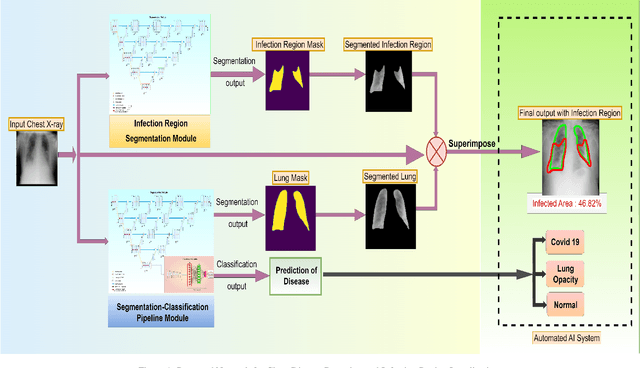



Abstract:In recent years, the integration of deep learning techniques into medical imaging has revolutionized the diagnosis and treatment of lung diseases, particularly in the context of COVID-19 and pneumonia. This paper presents a novel, lightweight deep learning based segmentation-classification network designed to enhance the detection and localization of lung infections using chest X-ray images. By leveraging the power of transfer learning with pre-trained VGG-16 weights, our model achieves robust performance even with limited training data. The architecture incorporates refined skip connections within the UNet++ framework, reducing semantic gaps and improving precision in segmentation tasks. Additionally, a classification module is integrated at the end of the encoder block, enabling simultaneous classification and segmentation. This dual functionality enhances the model's versatility, providing comprehensive diagnostic insights while optimizing computational efficiency. Experimental results demonstrate that our proposed lightweight network outperforms existing methods in terms of accuracy and computational requirements, making it a viable solution for real-time and resource constrained medical imaging applications. Furthermore, the streamlined design facilitates easier hyperparameter tuning and deployment on edge devices. This work underscores the potential of advanced deep learning architectures in improving clinical outcomes through precise and efficient medical image analysis. Our model achieved remarkable results with an Intersection over Union (IoU) of 93.59% and a Dice Similarity Coefficient (DSC) of 97.61% in lung area segmentation, and an IoU of 97.67% and a DSC of 87.61% for infection region localization. Additionally, it demonstrated high accuracy of 93.86% and sensitivity of 89.55% in detecting chest diseases, highlighting its efficacy and reliability.
Capturing and Recognizing Objects Appearance Employing Eigenspace
Mar 25, 2014
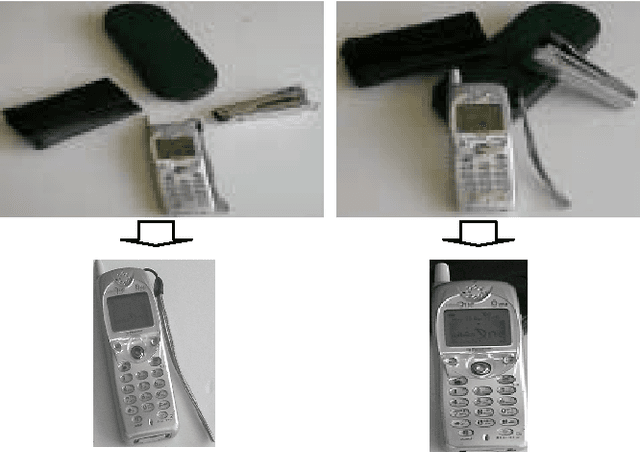
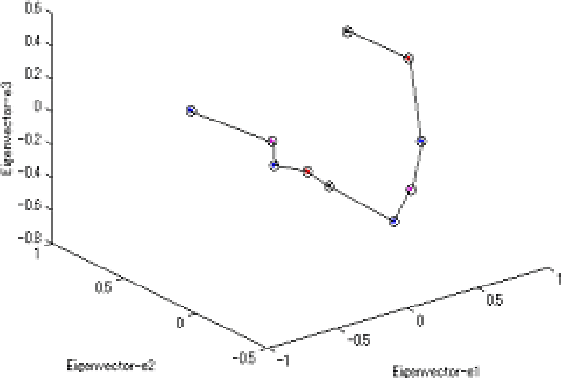
Abstract:This paper presents a method of capturing objects appearances from its environment and it also describes how to recognize unknown appearances creating an eigenspace. This representation and recognition can be done automatically taking objects various appearances by using robotic vision from a defined environment. This technique also allows extracting objects from some sort of complicated scenes. In this case, some of object appearances are taken with defined occlusions and eigenspaces are created by accepting both of non-occluded and occluded appearances together. Eigenspace is constructed successfully every times when a new object appears, and various appearances accumulated gradually. A sequence of appearances is generated from its accumulated shapes, which is used for recognition of the unknown objects appearances. Various objects environments are shown in the experiment to capture objects appearances and experimental results show effectiveness of the proposed approach.
On Comparison between Evolutionary Programming Network-based Learning and Novel Evolution Strategy Algorithm-based Learning
May 04, 2013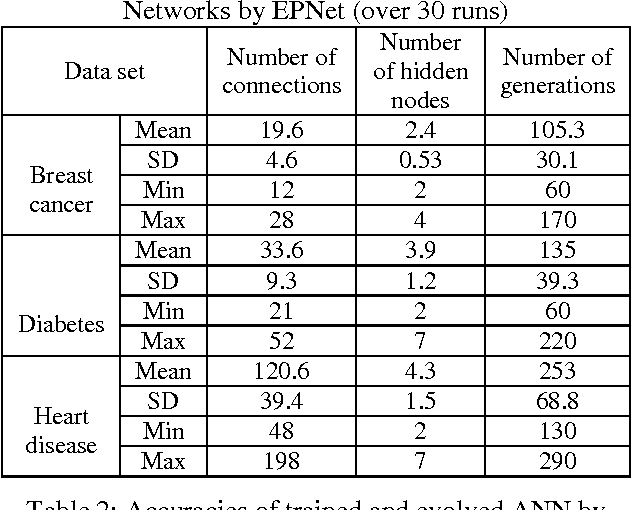
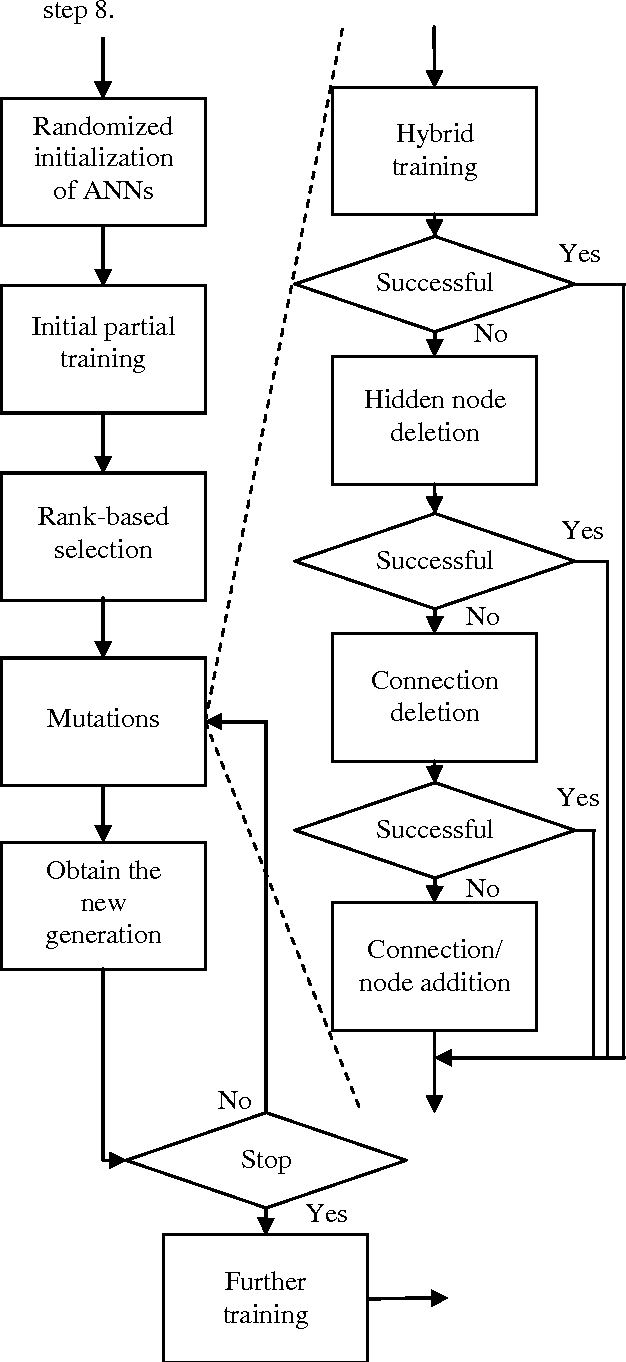
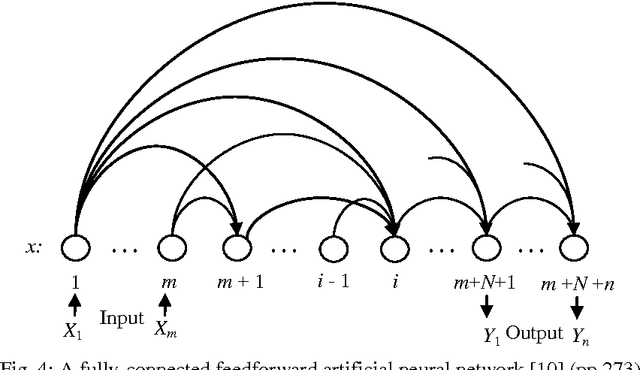

Abstract:This paper presents two different evolutionary systems - Evolutionary Programming Network (EPNet) and Novel Evolutions Strategy (NES) Algorithm. EPNet does both training and architecture evolution simultaneously, whereas NES does a fixed network and only trains the network. Five mutation operators proposed in EPNet to reflect the emphasis on evolving ANNs behaviors. Close behavioral links between parents and their offspring are maintained by various mutations, such as partial training and node splitting. On the other hand, NES uses two new genetic operators - subpopulation-based max-mean arithmetical crossover and time-variant mutation. The above-mentioned two algorithms have been tested on a number of benchmark problems, such as the medical diagnosis problems (breast cancer, diabetes, and heart disease). The results and the comparison between them are also presented in this paper.
On Integrating Fuzzy Knowledge Using a Novel Evolutionary Algorithm
Apr 28, 2013



Abstract:Fuzzy systems may be considered as knowledge-based systems that incorporates human knowledge into their knowledge base through fuzzy rules and fuzzy membership functions. The intent of this study is to present a fuzzy knowledge integration framework using a Novel Evolutionary Strategy (NES), which can simultaneously integrate multiple fuzzy rule sets and their membership function sets. The proposed approach consists of two phases: fuzzy knowledge encoding and fuzzy knowledge integration. Four application domains, the hepatitis diagnosis, the sugarcane breeding prediction, Iris plants classification, and Tic-tac-toe endgame were used to show the performance ofthe proposed knowledge approach. Results show that the fuzzy knowledge base derived using our approach performs better than Genetic Algorithm based approach.
Solving Linear Equations Using a Jacobi Based Time-Variant Adaptive Hybrid Evolutionary Algorithm
Apr 13, 2013Abstract:Large set of linear equations, especially for sparse and structured coefficient (matrix) equations, solutions using classical methods become arduous. And evolutionary algorithms have mostly been used to solve various optimization and learning problems. Recently, hybridization of classical methods (Jacobi method and Gauss-Seidel method) with evolutionary computation techniques have successfully been applied in linear equation solving. In the both above hybrid evolutionary methods, uniform adaptation (UA) techniques are used to adapt relaxation factor. In this paper, a new Jacobi Based Time-Variant Adaptive (JBTVA) hybrid evolutionary algorithm is proposed. In this algorithm, a Time-Variant Adaptive (TVA) technique of relaxation factor is introduced aiming at both improving the fine local tuning and reducing the disadvantage of uniform adaptation of relaxation factors. This algorithm integrates the Jacobi based SR method with time variant adaptive evolutionary algorithm. The convergence theorems of the proposed algorithm are proved theoretically. And the performance of the proposed algorithm is compared with JBUA hybrid evolutionary algorithm and classical methods in the experimental domain. The proposed algorithm outperforms both the JBUA hybrid algorithm and classical methods in terms of convergence speed and effectiveness.
* arXiv admin note: substantial text overlap with arXiv:1304.3200, arXiv:1304.2097
An Improved ACS Algorithm for the Solutions of Larger TSP Problems
Apr 13, 2013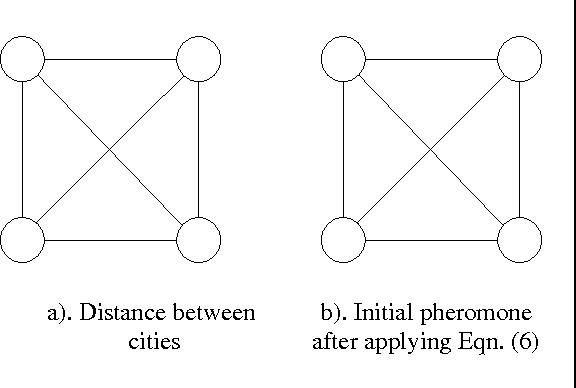
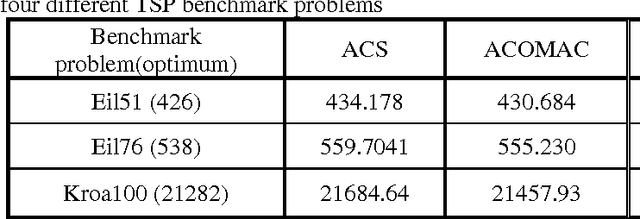
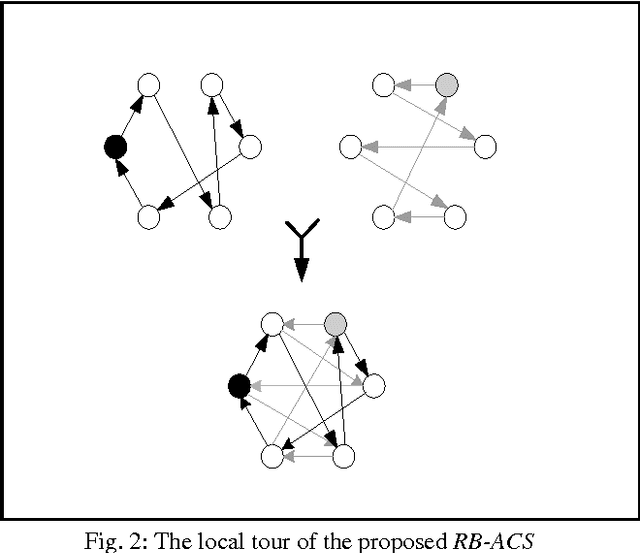
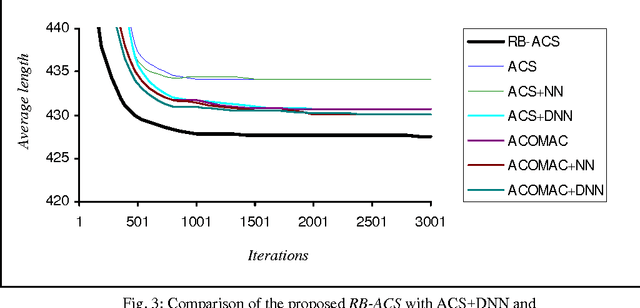
Abstract:Solving large traveling salesman problem (TSP) in an efficient way is a challenging area for the researchers of computer science. This paper presents a modified version of the ant colony system (ACS) algorithm called Red-Black Ant Colony System (RB-ACS) for the solutions of TSP which is the most prominent member of the combinatorial optimization problem. RB-ACS uses the concept of ant colony system together with the parallel search of genetic algorithm for obtaining the optimal solutions quickly. In this paper, it is shown that the proposed RB-ACS algorithm yields significantly better performance than the existing best-known algorithms.
An Approach to Solve Linear Equations Using a Time-Variant Adaptation Based Hybrid Evolutionary Algorithm
Apr 11, 2013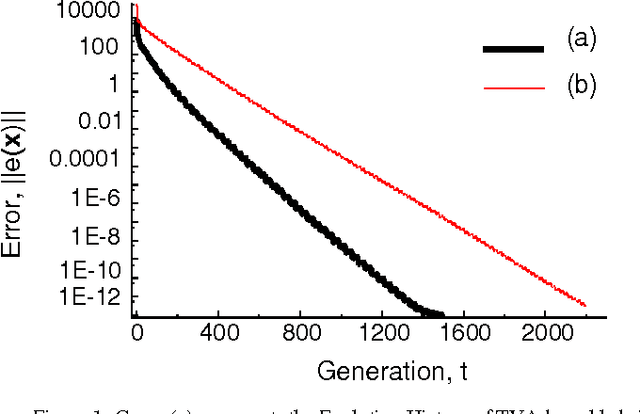
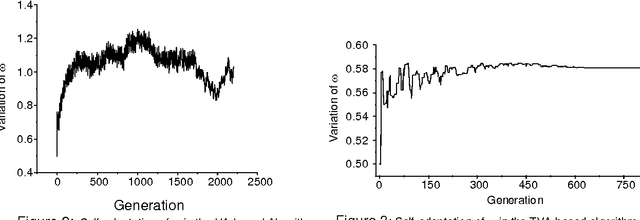
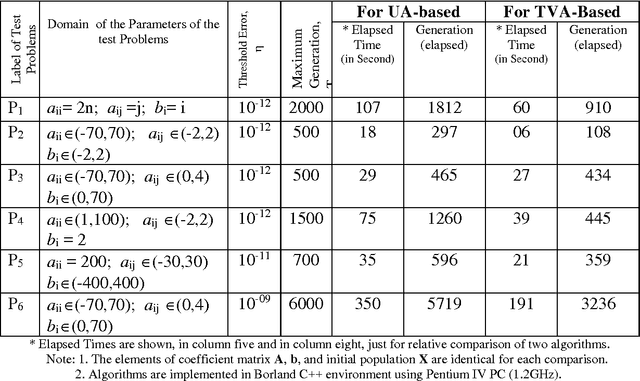
Abstract:For small number of equations, systems of linear (and sometimes nonlinear) equations can be solved by simple classical techniques. However, for large number of systems of linear (or nonlinear) equations, solutions using classical method become arduous. On the other hand evolutionary algorithms have mostly been used to solve various optimization and learning problems. Recently, hybridization of evolutionary algorithm with classical Gauss-Seidel based Successive Over Relaxation (SOR) method has successfully been used to solve large number of linear equations; where a uniform adaptation (UA) technique of relaxation factor is used. In this paper, a new hybrid algorithm is proposed in which a time-variant adaptation (TVA) technique of relaxation factor is used instead of uniform adaptation technique to solve large number of linear equations. The convergence theorems of the proposed algorithms are proved theoretically. And the performance of the proposed TVA-based algorithm is compared with the UA-based hybrid algorithm in the experimental domain. The proposed algorithm outperforms the hybrid one in terms of efficiency.
* arXiv admin note: text overlap with arXiv:1304.2097
For Solving Linear Equations Recombination is a Needless Operation in Time-Variant Adaptive Hybrid Algorithms
Apr 09, 2013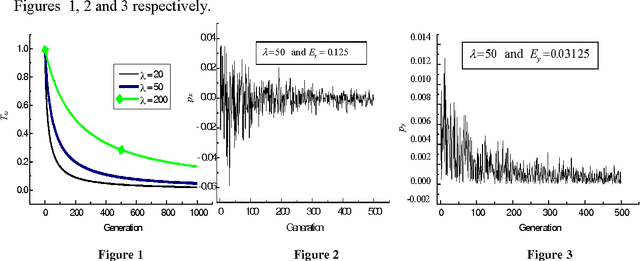
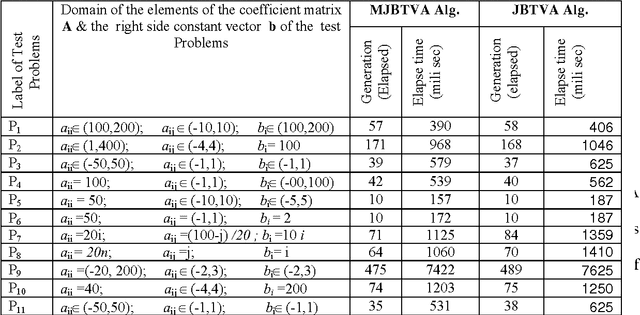
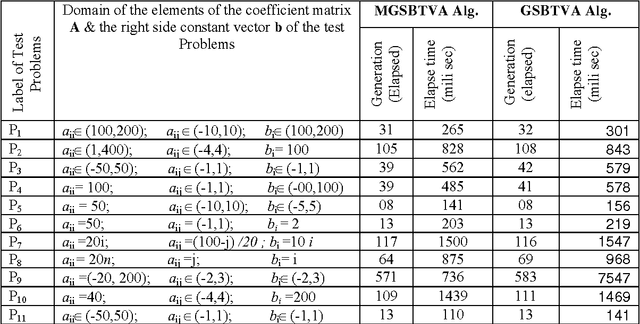
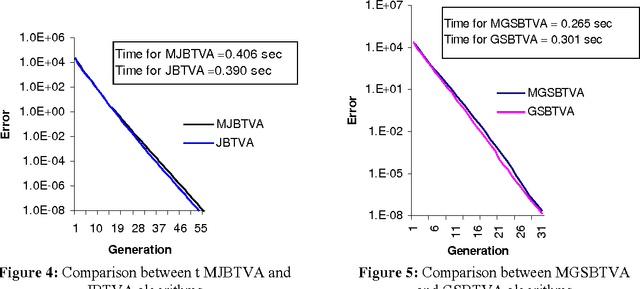
Abstract:Recently hybrid evolutionary computation (EC) techniques are successfully implemented for solving large sets of linear equations. All the recently developed hybrid evolutionary algorithms, for solving linear equations, contain both the recombination and the mutation operations. In this paper, two modified hybrid evolutionary algorithms contained time-variant adaptive evolutionary technique are proposed for solving linear equations in which recombination operation is absent. The effectiveness of the recombination operator has been studied for the time-variant adaptive hybrid algorithms for solving large set of linear equations. Several experiments have been carried out using both the proposed modified hybrid evolutionary algorithms (in which the recombination operation is absent) and corresponding existing hybrid algorithms (in which the recombination operation is present) to solve large set of linear equations. It is found that the number of generations required by the existing hybrid algorithms (i.e. the Gauss-Seidel-SR based time variant adaptive (GSBTVA) hybrid algorithm and the Jacobi-SR based time variant adaptive (JBTVA) hybrid algorithm) and modified hybrid algorithms (i.e. the modified Gauss-Seidel-SR based time variant adaptive (MGSBTVA) hybrid algorithm and the modified Jacobi-SR based time variant adaptive (MJBTVA) hybrid algorithm) are comparable. Also the proposed modified algorithms require less amount of computational time in comparison to the corresponding existing hybrid algorithms. As the proposed modified hybrid algorithms do not contain recombination operation, so they require less computational effort, and also they are more efficient, effective and easy to implement.
A New Distributed Evolutionary Computation Technique for Multi-Objective Optimization
Apr 09, 2013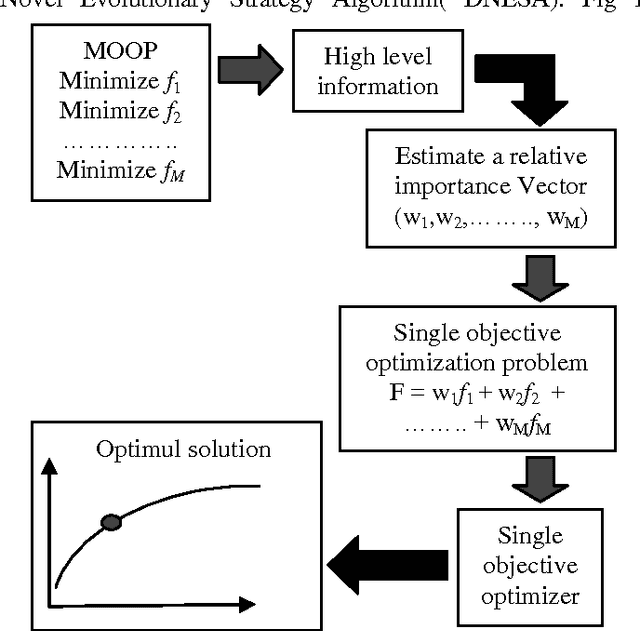
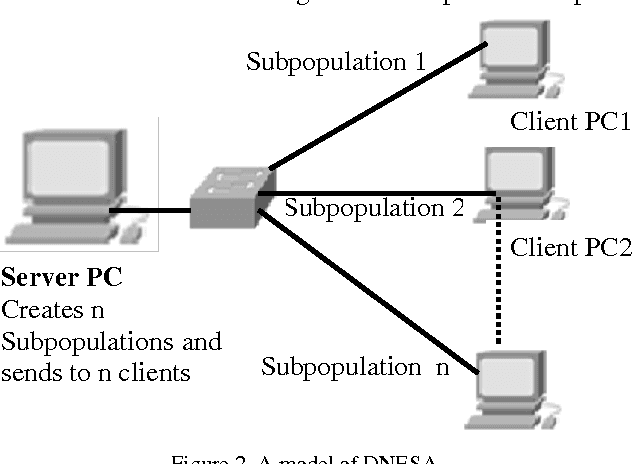
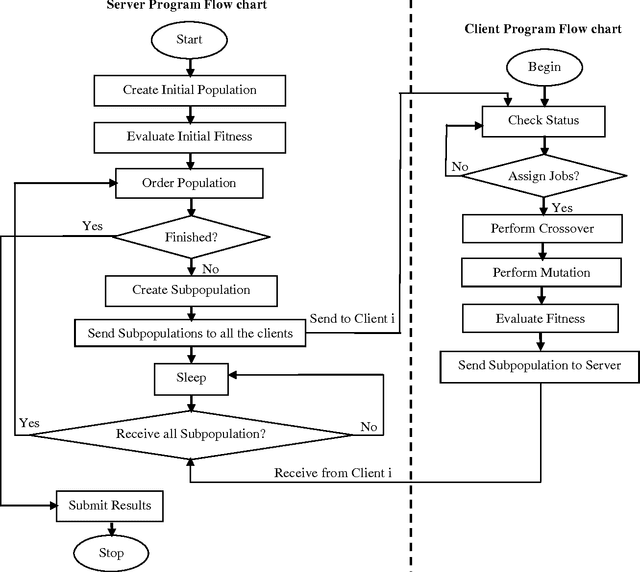
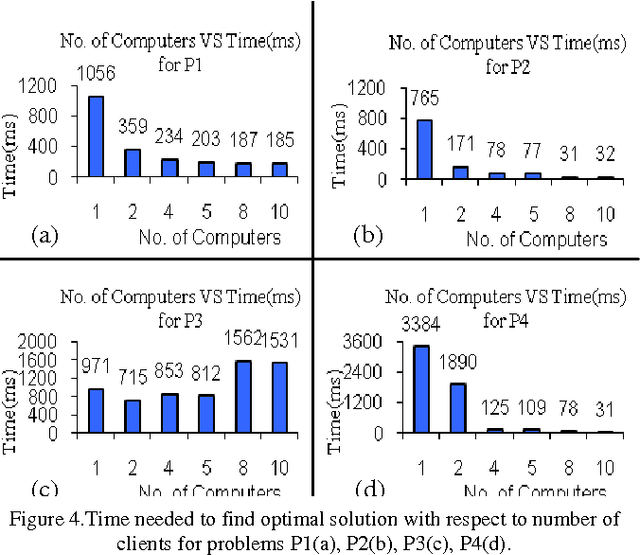
Abstract:Now-a-days, it is important to find out solutions of Multi-Objective Optimization Problems (MOPs). Evolutionary Strategy helps to solve such real world problems efficiently and quickly. But sequential Evolutionary Algorithms (EAs) require an enormous computation power to solve such problems and it takes much time to solve large problems. To enhance the performance for solving this type of problems, this paper presents a new Distributed Novel Evolutionary Strategy Algorithm (DNESA) for Multi-Objective Optimization. The proposed DNESA applies the divide-and-conquer approach to decompose population into smaller sub-population and involves multiple solutions in the form of cooperative sub-populations. In DNESA, the server distributes the total computation load to all associate clients and simulation results show that the time for solving large problems is much less than sequential EAs. Also DNESA shows better performance in convergence test when compared with other three well-known EAs.
On Appropriate Selection of Fuzzy Aggregation Operators in Medical Decision Support System
Apr 09, 2013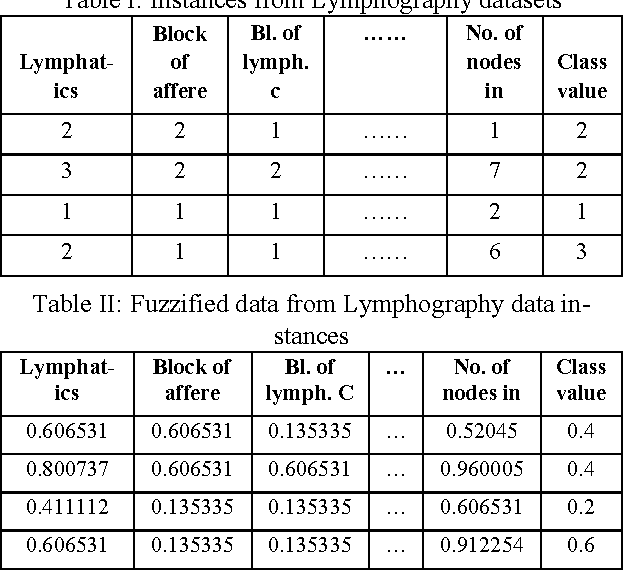
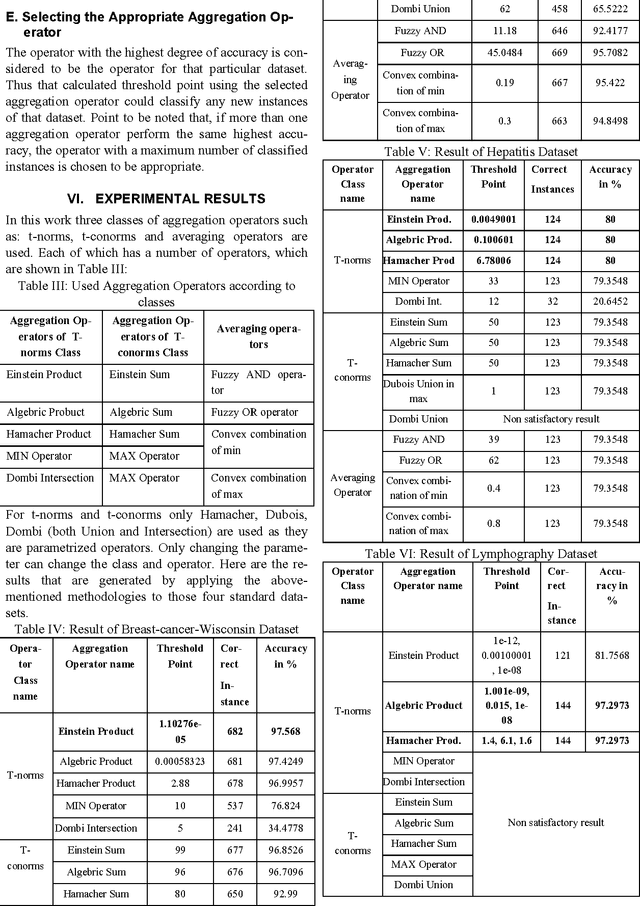
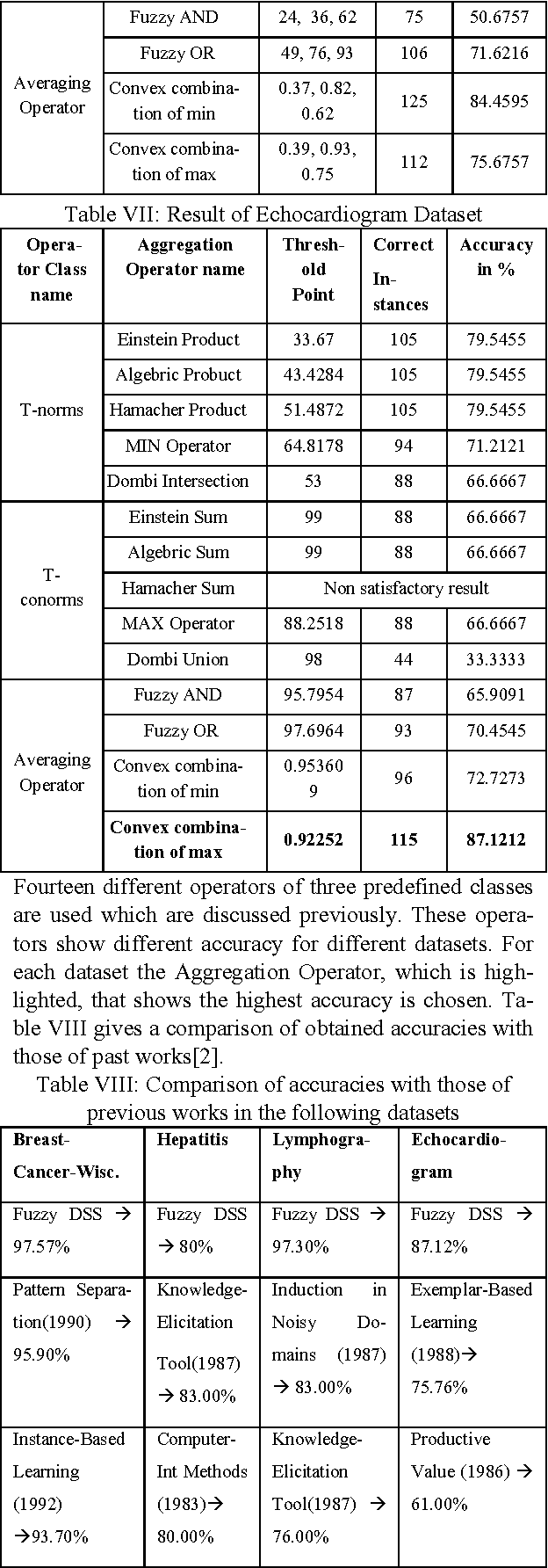
Abstract:The Decision Support System (DSS) contains more than one antecedent and the degrees of strength of the antecedents need to be combined to determine the overall strength of the rule consequent. The membership values of the linguistic variables in Fuzzy have to be combined using an aggregation operator. But it is not feasible to predefine the form of aggregation operators in decision making. Instead, each rule should be found based on the feeling of the experts and on their actual decision pattern over the set of typical examples. Thus this work illustrates how the choice of aggregation operators is intended to mimic human decision making and can be selected and adjusted to fit empirical data, a series of test cases. Both parametrized and nonparametrized aggregation operators are adapted to fit empirical data. Moreover, they provided compensatory properties and, therefore, seemed to produce a better decision support system. To solve the problem, a threshold point from the output of the aggregation operators is chosen as the separation point between two classes. The best achieved accuracy is chosen as the appropriate aggregation operator. Thus a medical decision can be generated which is very close to a practitioner's guideline.
 Add to Chrome
Add to Chrome Add to Firefox
Add to Firefox Add to Edge
Add to Edge